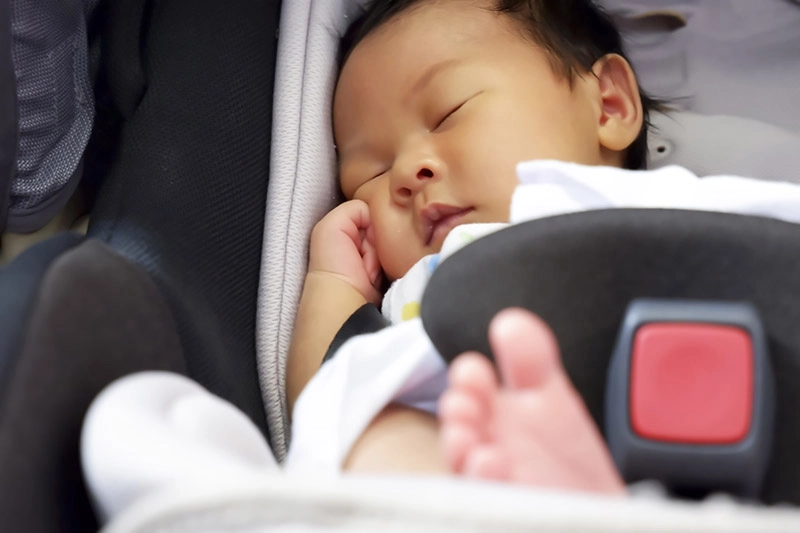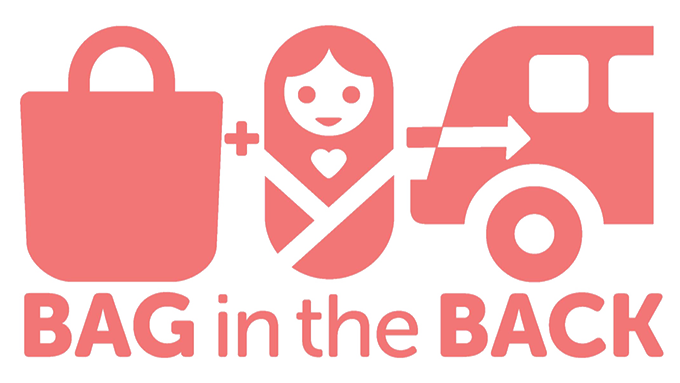
16 Nov Keeping Kids Safe: Avoiding Hot Car Tragedies This Back-To-School Season
Every year, as summer fades and the weather cools the bustling back-to-school season begins. Kids, along with their parents and caregivers, start to adjust to the new routines. While this transition is filled with the joy of new beginnings, it also comes with critical safety concerns: the risk of hot car tragedies.
Even though most parents are aware that leaving a child unattended in a car is unsafe, many do so because they think they’ll only be away from the vehicle for a few minutes, or that it’s okay because the car window is partially open—however, for a small child whose body heats up three to five times faster than an adult’s, even ten minutes can be too long. What could have been a simple stop at the store for milk could quickly turn into a tragedy.
Understanding the Risks
About 38 children die each year from vehicular heatstroke, according to statistics from KidsAndCars.org and NoHeatStroke.org. In 2022 alone, there were 36 hot car deaths, with 25 reported so far in 2023.
Heartbreakingly, in most of these incidents, children were unknowingly left behind in the vehicle. This makes heat stroke the leading cause of non-crash-related deaths in vehicles for children aged 14 and younger.
It’s a grim reality that these tragedies can happen to anyone. Even the most organized, well-rested parent can accidentally leave a child in the car alone. It’s also important to note that historically, about a quarter of hot car deaths have occurred because a child gained access to a car on their own.
With the back-to-school season in full swing and offering various distractions, parents and caregivers need to be doubly sure of their children’s whereabouts.
🔥How hot can it get in a parked car?
On an 85-degree day, for example, the temperature inside will exceed 100 degrees within ten minutes and 113 degrees within 30 minutes. Even on cooler days, temperatures inside cars can quickly rise above 90 degrees.
These extreme temperatures can lead to serious health consequences. According to the Cleveland Clinic, when the body’s internal temperature rises above 104 degrees, organs start to shut down. Heatstroke symptoms include dizziness, nausea, headaches, confusion, exhaustion, and seizures—and without immediate medical attention, can result in death.
Practical Tips for Safety
A parent’s job is never done. Between work and exercise, errands, and playdates, it can be a challenge to stay on top of everything. One in-the-moment task often overlooked is ensuring your child is never alone in the car – not even for “just five minutes.” For parents who tend to get distracted during their drives, reminders are important—even critical.
With that in mind, we’ve put together some tips for parents and caregivers alike on how to prevent an unnecessary tragedy, inspired by the Bag in the Back campaign, that you can adopt:
- Place a Bag in the Back
Our flagship campaign at the Sofia Foundation for Children’s Safety is “Bag in the Back.” Our mission is to raise awareness and to prevent tragic hot car incidents through the simple habit of placing an essential item in the back seat such as your handbag, briefcase, or phone. This practice forces you to open the back door every time you park, ensuring you check the backseat.

Find everything you need to ensure the tragedy of hot car deaths never happens to you or your loved ones – help us get the word out about the Bag In The Back habit.
- Set Alarms
Set daily reminders on your phone or smart device during your typical drop-off times to double-check the backseat. You can also use apps specifically designed to remind parents of their child’s presence, which may provide additional safety measures like sending notifications to multiple contacts in case you do not respond to the initial alarm.
- Visual Cues
Create a visual reminder system by placing a stuffed animal, toy, or another noticeable object in the child’s car seat when it’s empty. When your child is in the back seat, move the object to the front seat so that it serves as a visual cue, reminding you of their presence before getting out of the vehicle.
- Routine Checks
Develop a routine pattern of always checking both the front and back seats before locking your vehicle. This habit can become second nature, similar to putting away shopping carts or fastening your seatbelt. Train yourself to do a thorough visual sweep of the car every time you park and exit, regardless of whether you have your child with you or not.
- Stay Alert
During transitional weeks, like starting a new job or school, it’s crucial to remain especially vigilant and alert, as changes in routine can lead to unintentional oversights. Communicate openly with other caregivers, including your spouse, family members, or daycare staff, to ensure everyone is on the same page. Remember to regularly confirm the child’s location and drop-off arrangements to avoid any potential confusion or mix-ups.
- Educate & Advocate
Raise awareness in your community. Talk to your family, friends, and school community about risks and preventive measures. Simple ways you can do this include sharing relevant information and preventive tips with your family, friends, and school community, and then encouraging them to implement these safety measures in their lives. You can also attend or facilitate workshops and local events to spread the message about protecting children from the dangers of overheating or being accidentally left inside vehicles.
- Keep Vehicles Locked
When not in use, ensure that your car remains locked to prevent children from playing inside and potentially getting trapped. Teach children that vehicles are not play areas and consistently enforce that rule. Store keys and remote openers out of reach to discourage unsupervised access. When you maintain the habit of keeping vehicles locked, you establish an essential boundary, preventing accidents and promoting safety.
🤔 What do you do if you see a child alone in a car?
1. Take Immediate Action
If you encounter a situation where a child is alone in a car and there’s no sign of their parents or caregivers nearby, it’s crucial to take action immediately. The child could be at risk of overheating or other dangers, so every second counts. Call 911 without delay to alert local law enforcement and emergency medical services.
In your phone call, make sure to provide as much information as possible: exact location, the color and make of the vehicle, and importantly, the apparent condition of the child. Stay calm and be clear in your communication so that first responders can act swiftly.
2. Survey the Situation
While keeping the authorities updated, survey the situation visually to assess the child’s immediate condition. If the child appears unconscious, in distress, or has been in a hot car for quite a long time, this could be vital information that will help the 911 operator guide you through any necessary steps before the professionals arrive. Always follow the instructions of the emergency operator, though, to avoid accidentally escalating the situation.
3. Attract Attention
If you’re in a public place like a parking lot or a busy street, try to attract the attention of other passersby. The more people aware of the situation, the more pressure there is to handle it urgently, and the more likely it is to solicit immediate help and perhaps locate the child’s parent or guardian more quickly.
4. Educate Others
After the immediate crisis is handled, use the experience to raise awareness in your community. Share your experience with family, friends, and local community groups, or – if possible and with permission of the child’s parents or caregivers, share your experience on social media. Encourage others to keep an eye out and take action if they witness a similar situation. Stress that it’s always better to be safe and call for help rather than assume that everything is under control or that someone else will call.
Remember, your quick and decisive actions could prevent a tragedy and possibly save a child’s life!
🐶😺 Don’t Forget Our Furry Friends!
Just as children are vulnerable to extreme temperatures inside a parked car, our pets are equally at risk. It’s essential to remember that animals, especially dogs, do not sweat like humans. Their primary mode of cooling down is through panting, which becomes highly ineffective inside a hot vehicle.
For pets, a rapid rise in temperature can lead to heatstroke, which may result in irreversible organ damage, other severe health issues, or even death.
Remember: Awareness, Vigilance, and Developing the “Bag in the Back” Habit is Key
The journey from summer to school is brimming with tasks and responsibilities, but our children’s safety should remain paramount. With collective awareness and actionable measures, we can aim for a tragedy-free back-to-school season.
Join Our Mailing List
Stay Up-to-Date on Child Safety Habits, Upcoming
Events, and News Related to Vehicular Heatstroke.
Together We Can Save Lives!
What’s new at the Sofia Foundation for Children’s Safety?
In addition to the Bag In The Back campaign, the Sofia Foundation for Children’s Safety is actively developing a comprehensive whitepaper that delves into the common risks and injuries children face around cars.
This whitepaper will provide valuable insights and information to parents, caregivers, and healthcare providers, equipping them with the knowledge to prevent accidents and protect children from harm. Through a dedication to research and education, the foundation aims to create a safer environment for children, both inside and outside of vehicles.
Follow us on social media or look out for updates in your inbox for the latest news here at the Sofia Foundation for Children’s Safety:
If you’re interested in doing more to prevent vehicular heatstroke, consider making a donation and supporting Bag in the Back.
